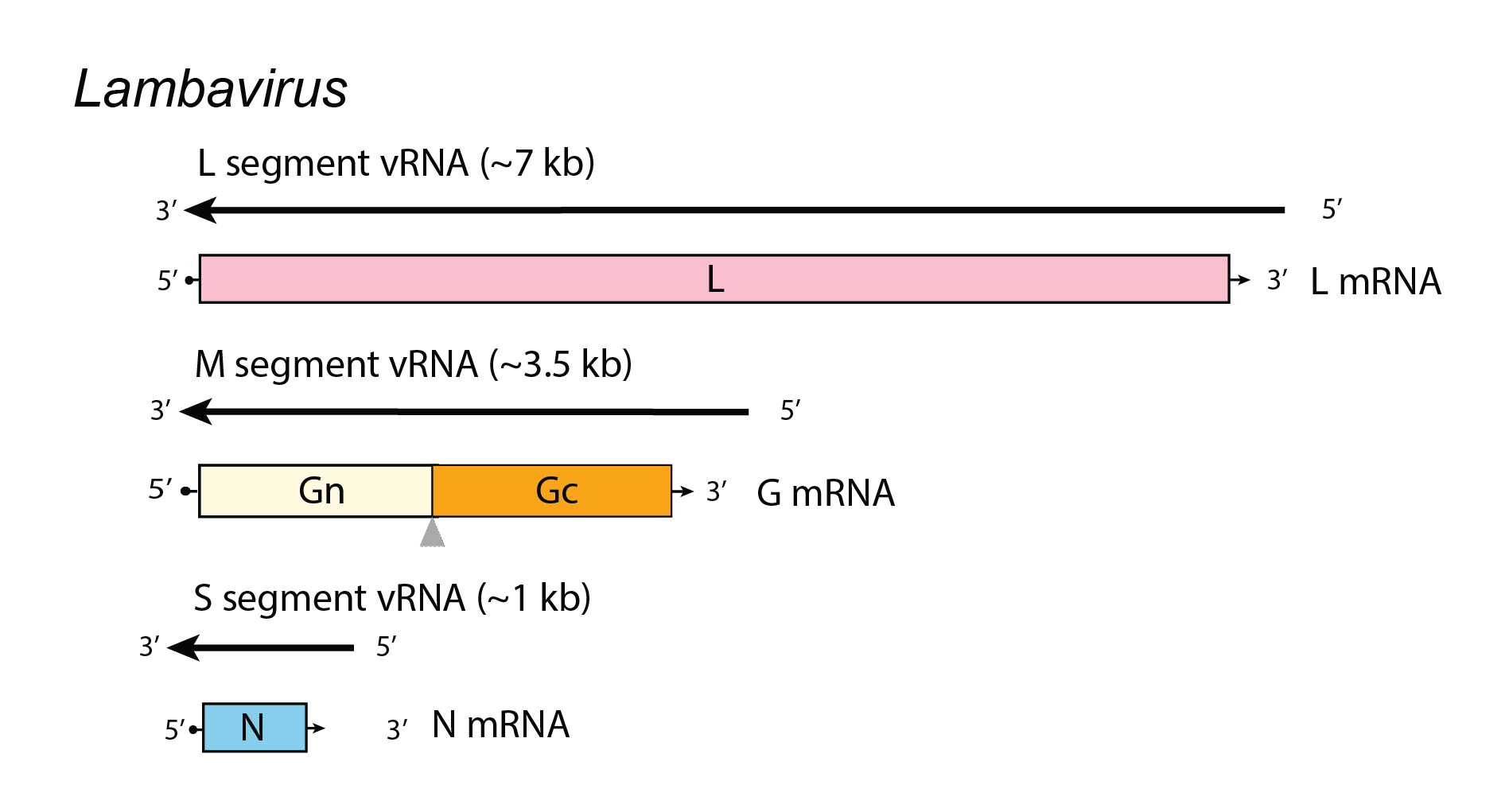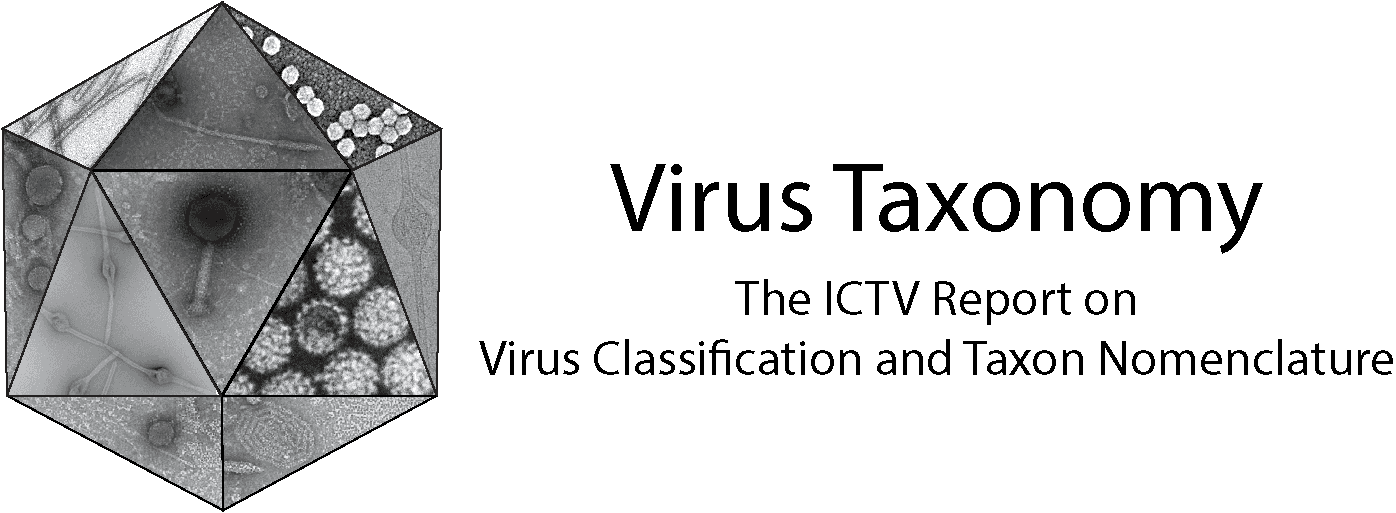Family: Peribunyaviridae
Genus: Lambavirus
Distinguishing features
The first lambavirus was isolated from largemouth bass in Wisconsin, USA in 2009. The exemplar isolate, largemouth bass bunyavirus, is the first virus in the family Peribunyaviridae to be discovered in ectothermic vertebrates and does not have a known arthropod vector. Lambavirus genomes do not encode any non-structural proteins (Waltzek et al., 2019).
Virion
Morphology
Mature virions are enveloped, spherical particles ~85 nm in diameter (Waltzek et al., 2019).
Nucleic acid
The lambavirus genome consists of three segments of negative-sense RNA including the L, M, and S segments. Each segment has nine base pair conserved regions with a non-canonical base pair at position 8, (in coding sense) 5′-GTAGTATACT…AGCATACTAC-3′ (Waltzek et al., 2019).
Proteins
Lambavirus genomes encode four structural proteins: L, the glycoproteins Gn and Gc, and the nucleocapsid protein N (Table 2.Peribunyaviridae). These viruses do not encode any non-structural proteins (Waltzek et al., 2019) (Figure 1.Lambavirus).
Lipids
Not described.
Carbohydrates
The Lambavirus glycoprotein is predicted to have 7 N-glycosylation sites, 6 on Gn and 1 on Gc (Waltzek et al., 2019).
Genome organization and replication
The lambavirus genome is similar to that of other peribunyaviruses. The S, M, and L segments encode N, Gn and Gc, and L proteins, respectively. The L protein includes an endonuclease in the N-terminus, and six conserved RNA-directed RNA polymerase (RdRP) motifs including pre-A, and motifs A–E in the central region. The lambavirus genome does not encode either of the non-structural proteins NSs or NSm (Waltzek et al., 2019).
 |
| Figure 1. Lambavirus. Lambavirus coding strategy. vcRNAs are depicted in 3′→5′ direction and mRNAs are depicted in a 5′→3′ direction. Coloured boxes on the mRNAs depict ORFs that encode the N, nucleocapsid protein; Gn and Gc, external glycoproteins; L, large protein. |
Replication and morphogenesis in the Golgi are likely to be similar to that of other members of the family; however, this has not been thoroughly examined (see ‘Genome organization and replication’ on the family page).
Biology
One lambavirus has been isolated from largemouth bass in the US. The potential pathogenesis of lambaviruses, host range, and potential aquatic vectors are currently unknown (Waltzek et al., 2019).
Species demarcation criteria
Not defined as the genus currently includes only a single species.

